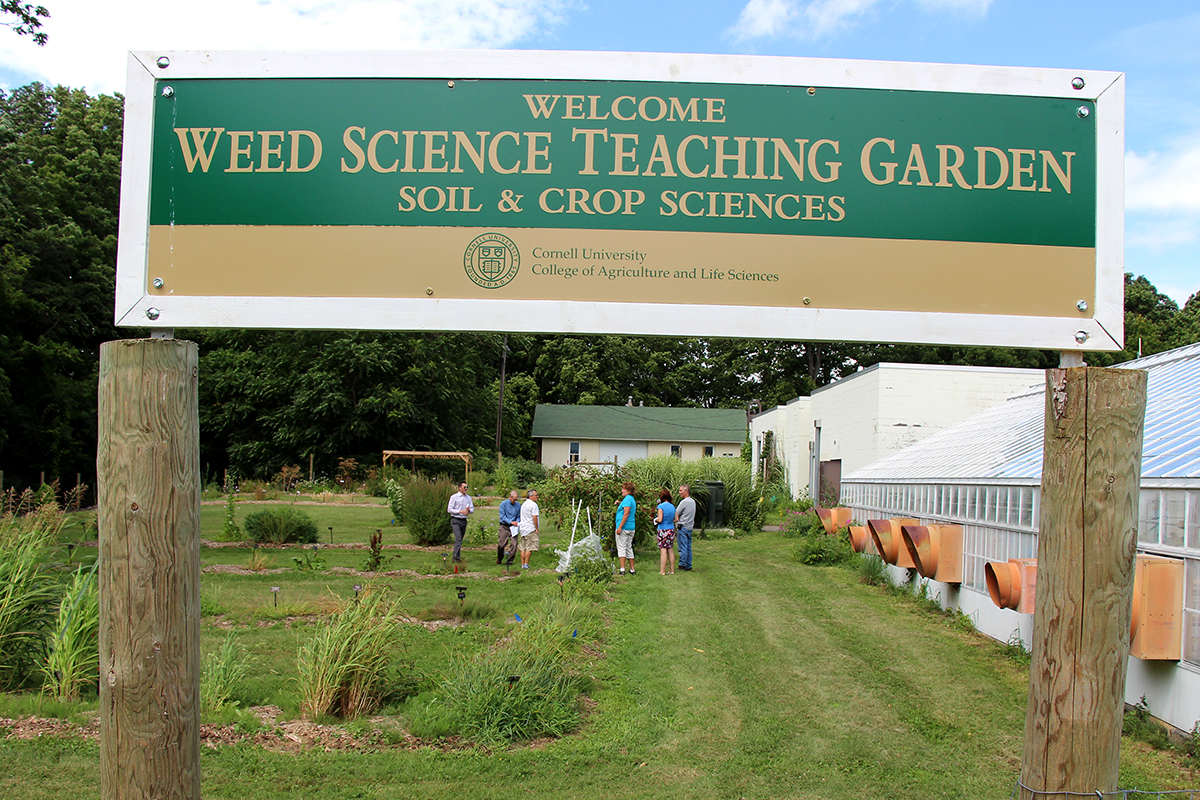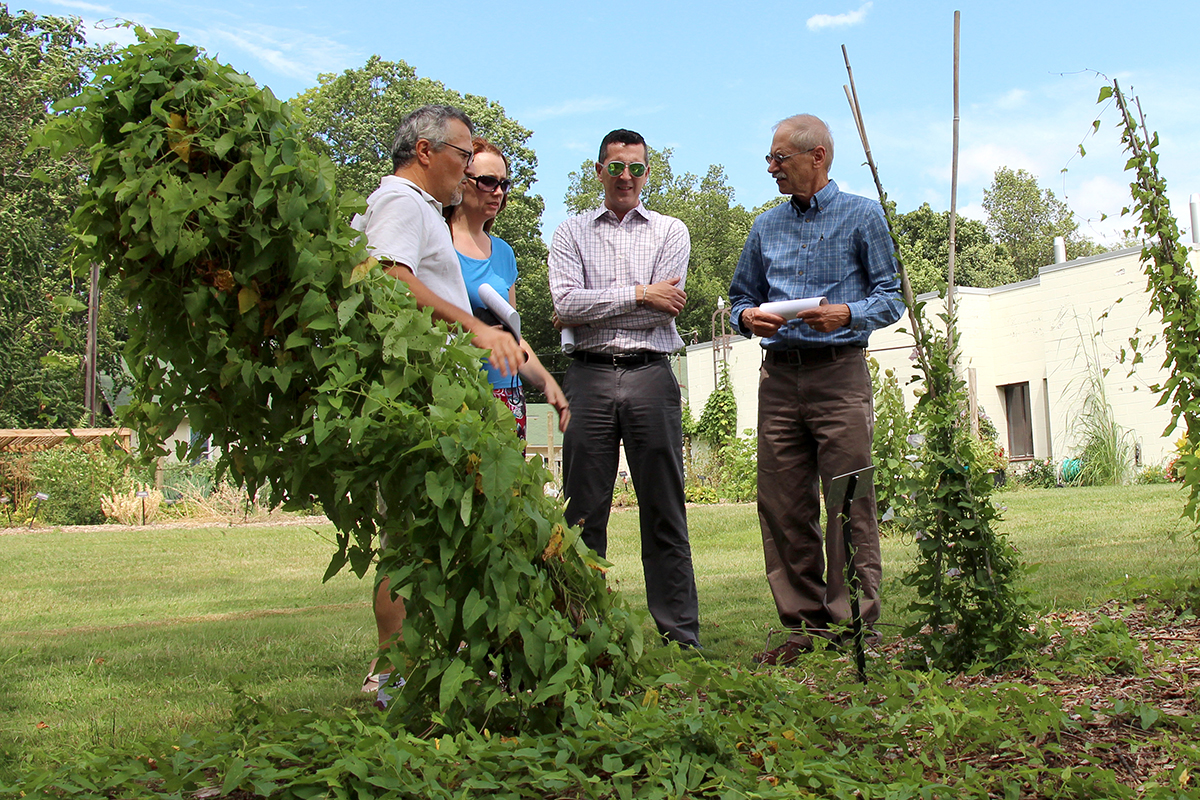Garden offers living library of weeds, poisonous plants
By Krishna Ramanujan


Let not others suffer the fate of Socrates.
The philosopher died after drinking poison hemlock. While Socrates knew the cup handed him contained poison, the Cornell Weed Science Teaching Garden gives students and the public a chance to recognize species that might harm them, their children or animals, cause allergies, spread crop diseases, and reduce yields by competing with crops.
The Weed Science Teaching Garden, located on Cornell’s campus behind the Muenscher Greenhouses off Caldwell Road, boasts 125 species of agronomically important weeds and poisonous plants and serves as a teaching tool.
“These are species that we felt were really important in our region,” said Antonio DiTommaso, professor of weed science in the School of Integrative Plant Science who uses the gardens when he teaches the undergraduate course Weed Biology & Management. The weeds in the garden “compete with and interfere with crop growth and even harvesting,” he said.
As a resource, students can visit the garden and identify such species as field bindweed, which gets in the way of combines during harvests, or eastern black nightshade, with its poisonous berries that mix in with soy beans and stain them purple.
The weeds are organized by families and are all relatives of our closest crops, DiTommaso said. Bur cucumber, in the cucumber family, is becoming a major problem in corn and soy fields in the Southern Tier. And wild oats, from which the phrase “sow your wild oats” stems, has self-sowing seed, allowing it to spread stubbornly.
The innocuous-seeming carrot family contains a number of poisonous weeds, including wild parsnip, Queen Anne’s lace, poison and water hemlock, and giant hogweed, whose sap terribly blisters skin and can cause blindness.
Until last fall, the weeds and poisonous plants were separated in two distinct gardens. While the weed garden began in 2008, the W.C. Muenscher Poisonous Plants Garden has roots dating to before 1954 when John M. Kingsbury, professor emeritus of botany and clinical sciences, took over a collection of pots started by botany professor Walter C. Muenscher on the second floor patio of the Plant Science Building. Muenscher, and then Kingsbury – who brought his knowledge of toxicology – taught a course in poisonous plants to veterinary students in the 1950s. Poisonous Plants now is taught by Mary Smith, professor of ambulatory and production medicine.
Kingsbury moved the garden in the 1960s next to the College of Veterinary Medicine’s James Law Auditorium, where it resided until last year. That’s when renovations to the auditorium building began and the poisonous plants were again moved and married with the weeds to create the current Weed Science Teaching Garden.
Along with providing a link for identifying the plants that lead to illness, and even death in farm animals, poisonous plants are also tied to stories, folklore and history.
For example, sweetclover, a nitrogen fixer that grows on roadsides but gets into hay and molds in moist conditions prevents blood from clotting, according to Kingsbury’s book, “Deadly Harvest: A Guide to Common Poisonous Plants.”
Anticoagulants were discovered from sweetclover when “a farmer said, ‘My cow died and the blood never coagulated’ and that’s how they developed the blood thinner Dicoumarol,” said Kathy Howard, a teaching support specialist in soil and crop sciences who maintains the gardens.
DiTommaso remembers his grandfather talked of the use of unprocessed beans of castor plants, whose phytotoxins created such great discomfort when ingested, they were used as a truth serum on prisoners in World War II.
And then there are plants known to affect people, such as St. Johns Wort, which is used as an antidepressant in humans, but it also makes skin sensitive to sunlight, leading to blisters when lighter-skinned cattle eat it.
Common ragweed has large human impacts, as it accounts for $1 billion in medical costs and lost wages and causes hay fever in 10 percent of the U.S. population, though most people mistakenly blame goldenrod for their fall allergies, said DiTommaso. “People are always shocked by what ragweed looks like,” added Howard – a problem easily solved by a visit to the Cornell Weed Science Teaching Garden.
Media Contact
Get Cornell news delivered right to your inbox.
Subscribe